GRAPHING POLAR EQUATIONS
Subscribe to our ▶️ YouTube channel 🔴 for the latest videos, updates, and tips.
Let P be the rectangular coordinate in the form (x, y), we should convert it into the form of (r, θ).
Then,
r2 = x2 + y2
Let us see some example problems to understand how to graph the given polar equations.
Example 1 :
Graph each of the following polar equations. Convert to rectangular coordinates, if possible.
(a) r = 3 (b) θ = π/6 (c) r sinθ = 2 (d) r = sec θ
Solution :
(a) r = 3
r is the directed distance from origin.
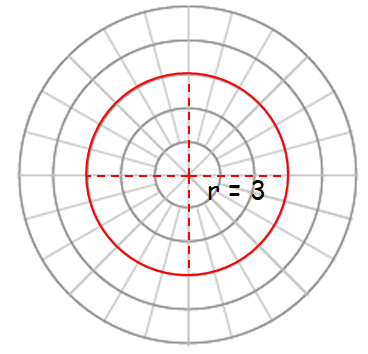
(b) θ = π/6
Angle formed in the positive along x axis.
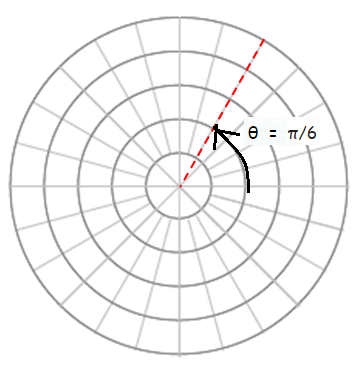
(c) r sinθ = 2
Since r sinθ = x
By replacing r sinθ by x, we get
x = 2
It is a straight line which is at 2 units distance from the origin.
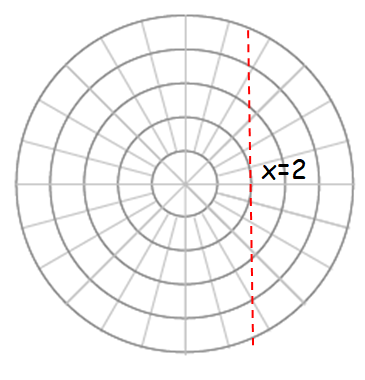
(d) r = sec θ
r/sec θ = 1
r cos θ = 1
x = 1
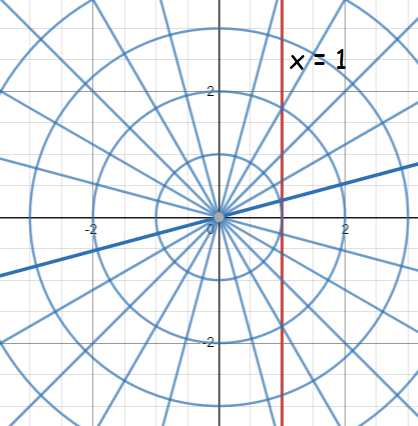
Example 2 :
Consider the equation r(θ) = 2 sinθ
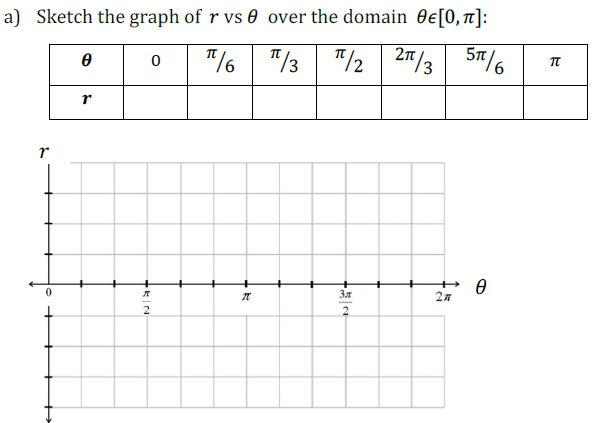
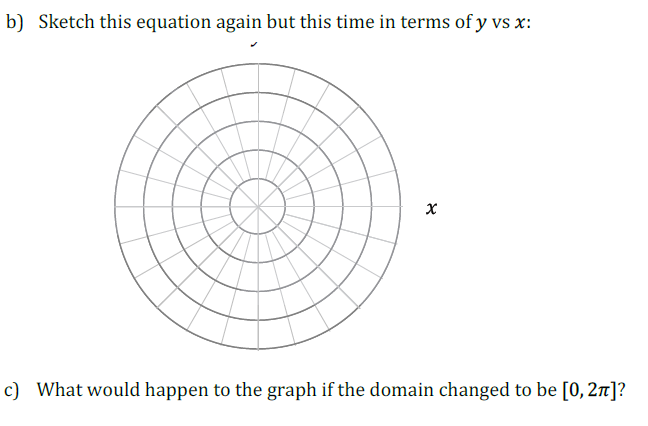
Solution :
(a)
|
If θ = 0 r(θ) = 2 sinθ r(0) = 2 sin0 r(0) = 0 |
If θ = π/6 r(π/6) = 2 sinπ/6 r(π/6) = 2(1/2) r(π/6) = 1 |
|
If θ = π/3 r(π/3) = 2 sinπ/3 r(π/3) = 1.732 |
If θ = π/2 r(π/2) = 2 sinπ/2 r(π/2) = 2 |
|
If θ = 2π/3 r(2π/3) = 2 sin 2π/3 r(π/3) = 1.732 |
If θ = 5π/6 r(5π/6) = 2 sin 5π/6 r(5π/6) = 1 If θ = π r(π) = 2sin π r(π) = 0 |
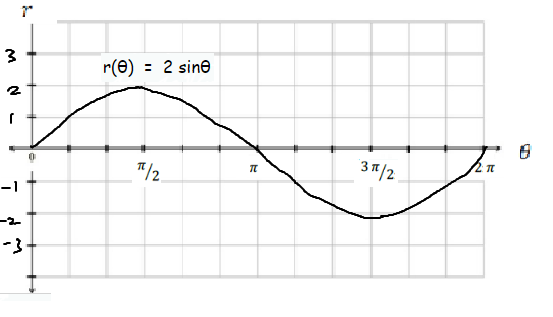
(b) Sketch the equation again but this time in terms of y vs x.
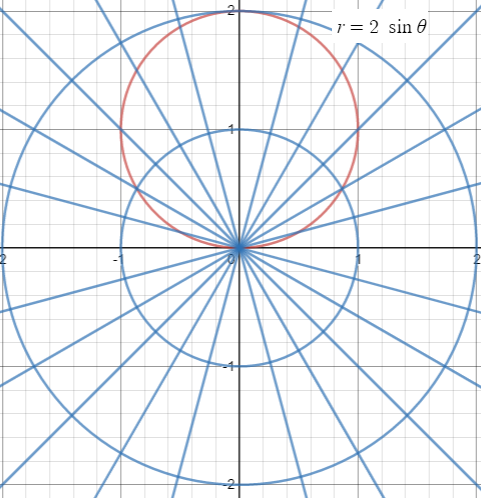
(c) If the domain is changed as [0, 2π], the graph will be same.
Example 3 :
Graph each polar equation then convert it into rectangular form.
(a) 1 = r sin θ (b) r = -3/cos θ
Solution :
r = 1/sin θ
If θ = 30, r = 2
If θ = 45, r = √2
If θ = 60, r = 2/√3
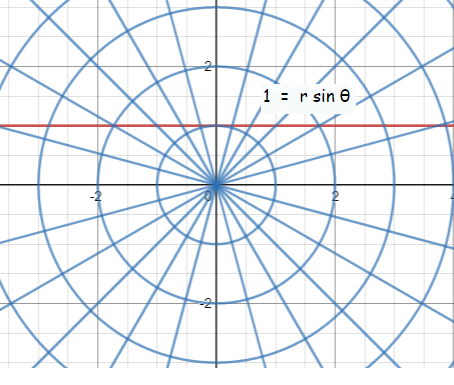
Converting the given into rectangular form :
Polar Equation :
1 = r sinθ
r sinθ = x
Rectangular form :
y = 1
(b) r = -3/cos θ
Solution :
r = -3/cos θ
If θ = 0, r = -3
If θ = 30, r = -2√3
If θ = 45, r = -3√2
If θ = 60, r = -6
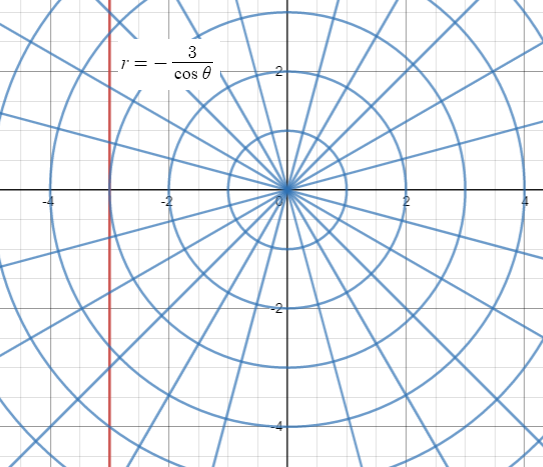
Converting the given into rectangular form :
Polar Equation :
r = -3/cosθ
r cos = -3
Rectangular form :
x = -3
Subscribe to our ▶️ YouTube channel 🔴 for the latest videos, updates, and tips.
Kindly mail your feedback to v4formath@gmail.com
We always appreciate your feedback.
About Us | Contact Us | Privacy Policy
©All rights reserved. onlinemath4all.com

Recent Articles
-
10 Hard SAT Math Questions (Part - 39)
Dec 28, 25 08:30 PM
10 Hard SAT Math Questions (Part - 39) -
10 Hard SAT Math Questions (Part - 41)
Dec 28, 25 06:05 PM
10 Hard SAT Math Questions (Part - 41) -
GMAT Quantitative Reasoning Questions and Answers
Dec 27, 25 09:33 PM
GMAT Quantitative Reasoning Questions and Answers
